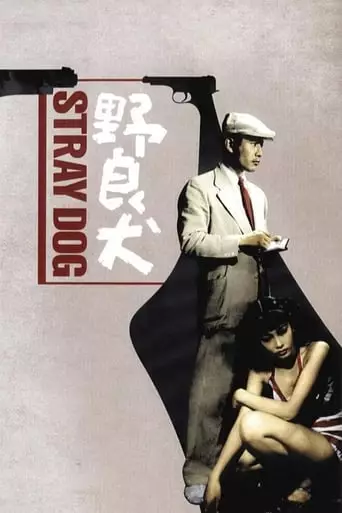
Stray Dog (1949) Watch Online Free
A bad day gets worse for young detective Murakami when a pickpocket steals his gun on a hot, crowded bus. Desperate to right the wrong, he goes undercover, scavenging Tokyo’s sweltering streets for the stray dog whose desperation has led him to a life of crime. With each step, cop and criminal’s lives become more intertwined and the investigation becomes an examination of Murakami’s own dark side.
Stray Dog (1949) is a gripping film noir directed by Akira Kurosawa, which marks a departure from his earlier samurai epics. This film, starring Toshiro Mifune as Detective Murakami, is one of Kurosawa’s most critically acclaimed works, and it delves into the darker side of post-WWII Japan, blending police procedural with psychological drama.
The film centers on Detective Murakami, a rookie cop who, in the midst of a scorching Tokyo summer, has his gun stolen. Filled with shame and guilt, Murakami embarks on a relentless, obsessive search to retrieve his firearm, which is increasingly being used in criminal acts. The plot evolves into a tense investigation, showcasing the intricate details of police work, while also touching on Murakami’s personal struggles with the consequences of his failure.
Murakami is paired with Detective Satō (played by Takashi Shimura), who brings a calm, experienced presence to the investigation. The contrast between the youthful, impetuous Murakami and the more seasoned Satō forms the emotional core of the story. As they delve deeper into the criminal underworld of Tokyo, the film explores themes of guilt, responsibility, and the impact of war on the psyche of individuals.
Stray Dog is remarkable not only for its compelling narrative but also for Kurosawa’s innovative use of cinematic techniques. The film is infused with elements of classic American film noir, using shadowy, atmospheric shots and tense close-ups to heighten the psychological drama. The movie also experiments with documentary-like realism, particularly in the way it portrays the crowded, chaotic streets of post-war Tokyo, enhancing the sense of urgency and desperation.
One notable sequence is an eight-minute montage where Murakami walks through the slums of Tokyo, searching for leads. This moment, which some critics have described as a bit slow, showcases Kurosawa’s meticulous attention to detail and his exploration of human emotion within a harsh urban environment
Beyond the procedural elements, Stray Dog delves into the psychological complexities of its characters. Murakami’s obsessive quest to retrieve his gun is not just a professional mission; it represents a deeper internal struggle with guilt and honor. This exploration of male psychology and personal responsibility is reflective of the broader themes of post-war Japanese society, grappling with the trauma and disillusionment following the devastation of WWII.
The character of Yusa, the criminal who comes into possession of Murakami’s gun, embodies the consequences of a broken society, a theme that Kurosawa examines through the lens of crime and justice. The film also touches on the idea that those who commit crimes are not always entirely distinct from those who enforce the law, a concept that continues to resonate in crime dramas today
After watching Stray Dog, you’ll likely experience a sense of unease, as the film’s tension and psychological depth linger long after the credits roll. The story’s introspective exploration of guilt and justice may provoke deep thought about the nature of responsibility, both on a personal and societal level. The film’s somber tone and slow pace may leave you feeling reflective and contemplative, as you consider the emotional toll on the characters as well as the broader societal context of post-war Japan.
Stray Dog is not a fast-paced thriller but rather a character-driven narrative that requires patience from its audience. If you appreciate films that delve into the complexities of the human experience and enjoy crime dramas with psychological layers, this film will resonate with you deeply
